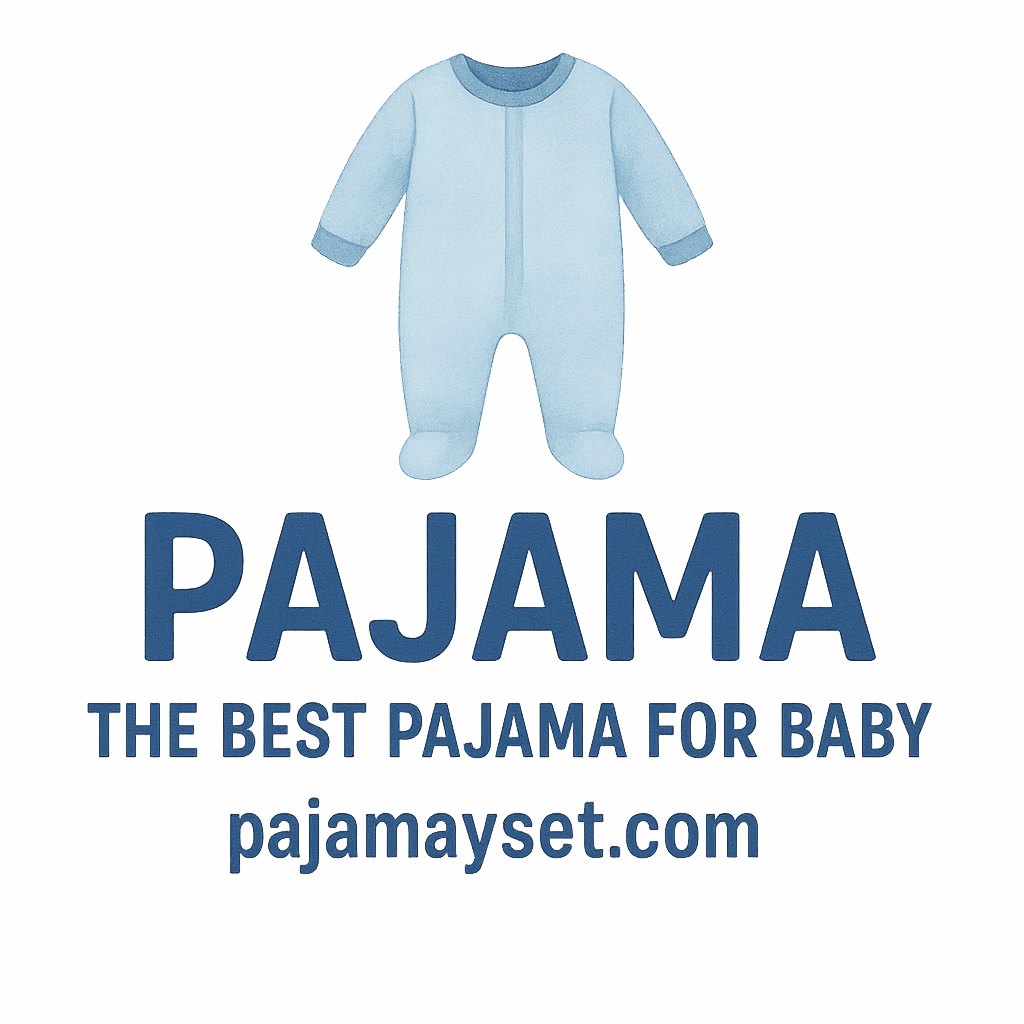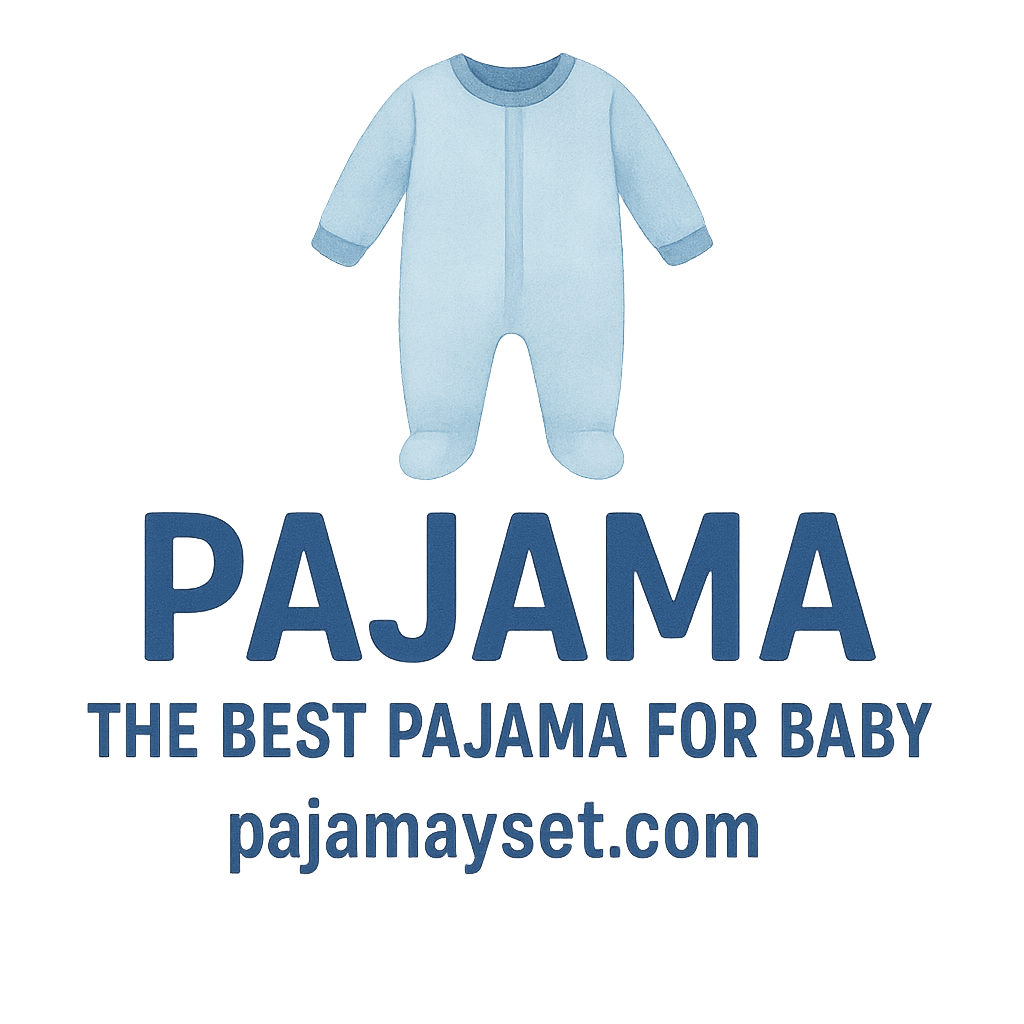Introduction: Why Pajama Safety Matters for Babies
As parents, ensuring our babies are safe and comfortable is always a priority. One of the often-overlooked risks involves baby pajamas. While pajamas may seem like a harmless item, they can pose significant dangers when not chosen with care. Loose pajamas, in particular, can lead to a variety of safety concerns. In this article, we’ll explore why loose pajamas are risky for babies and what you can do to ensure your little one sleeps soundly and securely.
The Risks of Loose Pajamas for Babies
Understanding Baby Safety Needs
Babies are constantly moving, and their fragile bodies are more sensitive than ours. Pajamas might seem like a simple piece of clothing, but when they’re not the right fit, they can be the source of several dangers. Loose pajama clothing can easily lead to choking, suffocation, entanglement, and discomfort. Understanding these risks is essential to providing the safest sleeping environment.
What Makes Pajamas Loose?
Loose pajamas are often designed with excess fabric or stretch materials that might not be suitable for babies. While these pajamas may seem cozy, they leave room for hazards like choking or overheating. Before purchasing baby sleepwear, always check that the fit is secure and appropriate for your baby’s size.
5 Reasons Loose Pajamas Are Risky for Babies
1. Risk of Choking Hazards from Buttons and Zippers
One of the most common hazards in loose pajamas is the presence of buttons, zippers, or any small removable components. If these items come loose, they can quickly become a choking hazard. Babies tend to put everything in their mouths, and small parts can easily be swallowed.
How Buttons Can Become Dangerous
Buttons, while functional, can detach if not securely sewn, posing a risk to babies who explore by putting things in their mouths. For more information on keeping your baby’s environment safe, consider learning about baby safety tips here.
Zippers and Loose Fabric – A Dangerous Combo
Zippers may make it easier to dress your baby, but they can also pose risks when they become loose or broken. A zipper that opens unexpectedly can cause the pajama fabric to become loose and entangled around your baby’s body. In fact, loose fabric can irritate your baby’s skin. Always check for well-sealed zippers to avoid injury. If you’re interested in safe fabric choices, you might want to explore our Pajama Materials Guide.
2. Risk of Suffocation from Overly Loose Pajamas
Another critical concern with loose pajamas is suffocation. Babies are unable to adjust themselves in their sleep the way adults can. Loose pajama fabric can shift and obstruct your baby’s nose or mouth, which can lead to suffocation risks.
The Dangers of Excess Fabric Around the Face
Loose fabric can easily shift during sleep and end up around your baby’s face, blocking airflow. This is especially dangerous for newborns who lack the motor control to move the fabric away. For tips on creating a safe sleeping environment, consider our advice on buying safe sleepwear.
Why Babies Are Vulnerable to Suffocation
Newborns and infants have limited movement capabilities, making them more vulnerable to suffocation if their breathing passages are obstructed. Because of this, it’s essential to choose pajamas that fit snugly without excess fabric around the face or neck.
3. Risk of Entanglement and Strangulation
Loose pajamas can also increase the risk of entanglement or strangulation. Babies are natural movers, especially during sleep, and loose fabric can get caught on crib rails, toys, or even other parts of their clothing.
Loose Pajamas and Baby’s Movement: A Hazardous Mix
As your baby moves around, loose pajama fabric can get wrapped around their limbs or neck, causing accidental entanglement. This can result in strangulation or physical injury. For better sleepwear options, you might want to consider custom-fit pajamas, which are designed to reduce any entanglement risks. Learn more about customized options here.
How Loose Pajamas Can Lead to Accidents
Loose fabric can lead to babies getting tangled in their clothing, leading to serious accidents. In some cases, the fabric might even get caught in a crib or baby gear, restricting their movement and causing distress. To avoid such dangers, opt for pajamas that fit well and leave no room for loose fabric.
4. Risk of Hypothermia or Overheating
Loose pajamas can contribute to temperature-related issues such as hypothermia or overheating, both of which pose significant health risks for babies.
Temperature Regulation in Babies: Why It Matters
Since babies can’t regulate their body temperature as efficiently as adults, it’s crucial to dress them in appropriate sleepwear that helps maintain a consistent temperature. Loose pajamas can lead to drafts or excess warmth, both of which can cause discomfort or health concerns. Learn more about choosing the right pajamas for different seasons and weather conditions in our Seasons & Weather Guide.
Loose Pajamas and Inconsistent Temperature Control
When fabric is too loose, it can create inconsistencies in your baby’s body temperature. If the fabric isn’t tightly secured, it may allow air drafts to cool your baby or trap too much heat, causing overheating. Babies are particularly vulnerable to both overheating and hypothermia, so it’s important to choose pajamas that provide a consistent temperature and are made of breathable materials. For ideas on breathable fabrics, check out our Breathable Pajama Options.

5. Risk of Discomfort and Poor Sleep Quality
Poorly fitting pajamas can make it hard for your baby to get a restful night’s sleep. Loose pajamas can cause discomfort by shifting around, tangling, or bunching up as your baby moves, resulting in a disrupted sleep pattern.
The Impact of Poor Pajama Fit on Baby’s Comfort
Babies who are not comfortable in their pajamas will likely wake up more often and struggle to fall asleep. Loose, ill-fitting pajamas are prone to shifting during the night, which may lead to irritation or discomfort. For more information on selecting pajamas that ensure comfort, visit our guide on comfortable baby sleepwear.
Better Alternatives to Loose Pajamas
Instead of opting for loose pajamas, consider purchasing pajamas made from soft, stretchy fabrics that conform to your baby’s body without being restrictive. Custom-fit pajamas provide a snug yet comfortable fit, keeping your baby safe and ensuring they sleep soundly.
How to Choose Safe Pajamas for Your Baby
The Importance of Proper Fit and Material Selection
When choosing pajamas for your baby, it’s important to focus on both fit and material. Pajamas should not be too tight or too loose. A snug fit ensures that fabric stays in place, preventing suffocation or entanglement risks. Soft fabrics such as cotton or bamboo are ideal for babies as they allow the skin to breathe.
Choosing Breathable Fabrics for Baby Pajamas
Fabrics like cotton, bamboo, and organic blends are excellent choices for babies, as they provide the necessary breathability to keep them comfortable while they sleep. Avoid fabrics that are too thick or made from synthetic materials that could trap heat. For additional recommendations on fabric types, see our article on pajama materials.
Why Custom-Fit Pajamas Work Best for Babies
Custom-fit pajamas are tailored to your baby’s body, ensuring that they fit securely and comfortably. With the right fit, you won’t have to worry about fabric shifting or becoming a safety hazard. If you’re looking for more personalized options, consider our custom baby pajamas.
Conclusion: Prioritize Safety and Comfort
When it comes to your baby’s sleepwear, safety should always be your top priority. Loose pajamas pose various risks, including choking hazards, suffocation, entanglement, temperature fluctuations, and poor sleep quality. By choosing well-fitting pajamas made from breathable, safe fabrics, you can ensure that your baby enjoys a peaceful and secure night’s rest.
FAQs about Baby Pajamas and Safety
- Are buttons and zippers safe for baby pajamas?
Buttons and zippers can be safe if they are securely fastened and covered, so always check that they are properly attached to prevent choking hazards. - How can I ensure my baby is comfortable at night?
Opt for pajamas that fit snugly but comfortably and are made from soft, breathable fabrics like cotton or bamboo. - What materials are best for baby pajamas?
Organic cotton, bamboo, and other natural materials are ideal for baby pajamas, as they are breathable and gentle on sensitive skin. - Can loose pajamas cause suffocation?
Yes, excess fabric can shift during sleep and block your baby’s airways, leading to suffocation risks. Always choose pajamas with a proper fit. - What are the signs that my baby’s pajamas are too loose?
If you notice your baby’s pajamas shifting or if there’s excess fabric around their face or neck, they may be too loose. - How tight should baby pajamas be?
Baby pajamas should be snug but not tight, allowing for movement without excess fabric that could cause hazards. - What safety features should I look for in baby pajamas?
Look for pajamas with secure fastenings, no loose buttons or zippers, breathable fabrics, and a snug fit that ensures comfort and safety.


